Sig Sauer has long been known for their Romeo red dot sights.
I compare the two most affordable Romeos to date in this Sig Sauer Romeo MSR VS Romeo 5 comparison review.
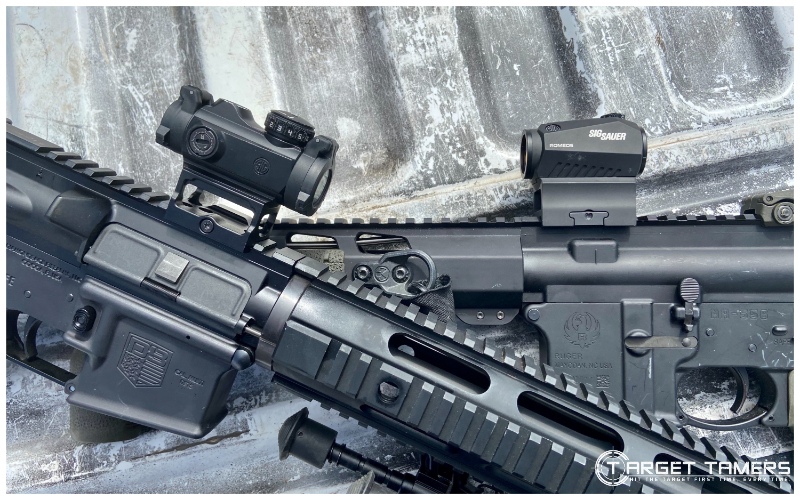
I own and use both Romeos regularly and with plenty of hours and rounds downrange, I compare everything from cost and illumination to battery life and special features that sets them apart.
Quick Comparison Overview & Table
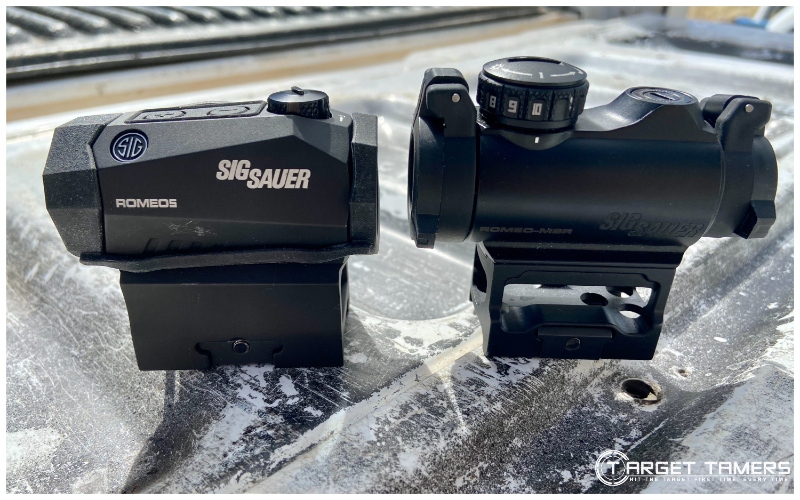
The Romeo MSR and the Romeo 5 red dots are similar in the fact that they have 2 MOA dots, are IPX7 waterproof and fog-proof, and are set out of the box for an absolute co-witness with direct-to-rail mounts. Everything from operation to battery runtime can be compared since they’re different.
By the way, if you want to check out either of these red dot sights in more depth, you can read my full hands-on reviews here:
| Features | Sig Sauer Romeo MSR | Sig Sauer Romeo 5 |
|---|---|---|
| Price Range | Under $80 | Under $150 |
| Configuration | 1x20 | 1x20 |
| Dot Size | 2 MOA | 2 MOA |
| Adjustment Value | 1 MOA | 0.5 MOA |
| Turret Type | Exposed, recessed | Capped |
| Illumination Settings | 10 DL / 2 NV | 8 DL / 2 NV |
| Illumination Control | Rotary dial | Button control |
| Battery Life | 20,000+ hours | 40,000+ hours |
| Battery Type & Location | CR1632 – top-loading | CR2032 – side-loading |
| Mounts | Absolute co-witness riser (1.41”) mount | Absolute co-witness riser (1.41”) & low-profile mount |
| Dimensions | 3.1 x 1.5 x 2.6” | 2.4 x 1.5 x 1.5” |
| Weight | 4.9 oz | 5.1 oz |
| Waterproof | IPX7 | IPX7 |
| Lens Caps | See-through flip-up caps | Rubber bikini caps |
| Special Features | Continuous on | MOTAC |
Why Trust Me?
After hundreds of hours of hand-testing red dot sights in the field and on the hunt, and thousands more hours researching, writing, photographing and creating videos about them, I feel I have earned the title of expert when it comes to optics!
Optics are not just my passion, but also my full-time job!
I get my hands on as many of the optics I test as possible (through buying, borrowing or begging!) and run them through their paces to make sure they will perform out in field.
Check out our optics testing process here.
Over a decade of experience training, recreational use and hunting has been integral in putting together this Sig Sauer Romeo MSR VS Romeo 5 comparison.
Feature Comparisons of the Sig Sauer Romeo MSR VS Sig Sauer Romeo 5
Cost
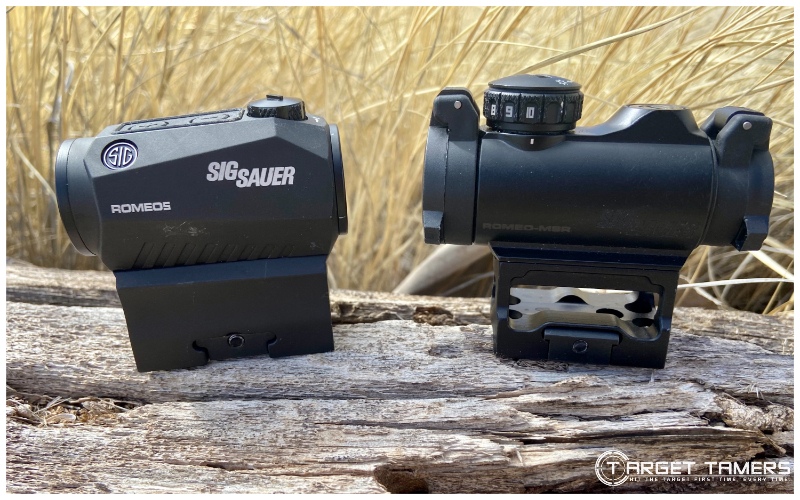
Both the MSR and Romeo 5 are budget options but far from cheap quality when we think of ‘cheap’ optics. They’re both well-made, perform above expectations for the money, and they’re still go-to optics on my AR rifles to date.
The Romeo MSR has an attractive price point coming in under $100, so if the goal is to spend as less as possible, the MSR will serve you well. The Romeo 5 may not be under $100 – yet, but it’s close to it especially when it goes on sale. On average, it hovers around $120-$150, but can be seen around $200.
Since both are considered affordable and they rank in among my top 7, check out the Best Budget Red Dot Sights guide to learn more about other cheap, but great and field-tested, red dot optic!
Winner: Romeo MSR
Configuration
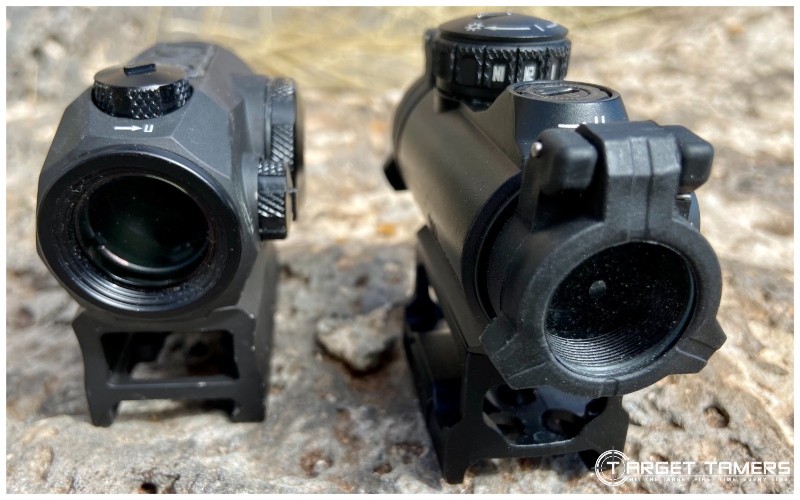
The configuration is the magnification and the objective lens diameter of an optic. In this case, both the MSR and the Romeo 5 share the same configuration of 1x magnification and a 20mm objective lens diameter.
Both work perfectly with the Sig Sauer Juliet3-Micro magnifier, and neither have an upper hand in configuration.
If adding a magnifier to your red dot interests you, see our Best Red Dot Magnifier guide for 3x, 4x, and 5x options!
Winner: Tie
Glass Quality
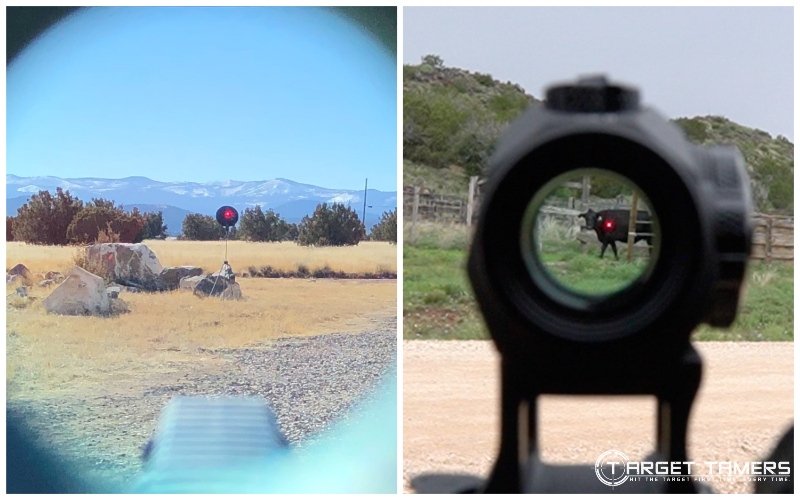
The Romeo sights are made in China. Though both the Romeo MSR and Romeo 5 have high-performance coatings, I have noticed that the Sig MSR has a very slight blue tint to it while the Romeo 5 has more natural color fidelity.
Even though I mention the blue hue on the MSR, it’s not in any way distracting. It almost seems like less of an issue when I’m using it with the caps on – just thought I’d mention that.
But as far as the most eye-pleasing color fidelity out of the box, that honor belongs to the Romeo 5.
Winner: Romeo 5
Build Quality
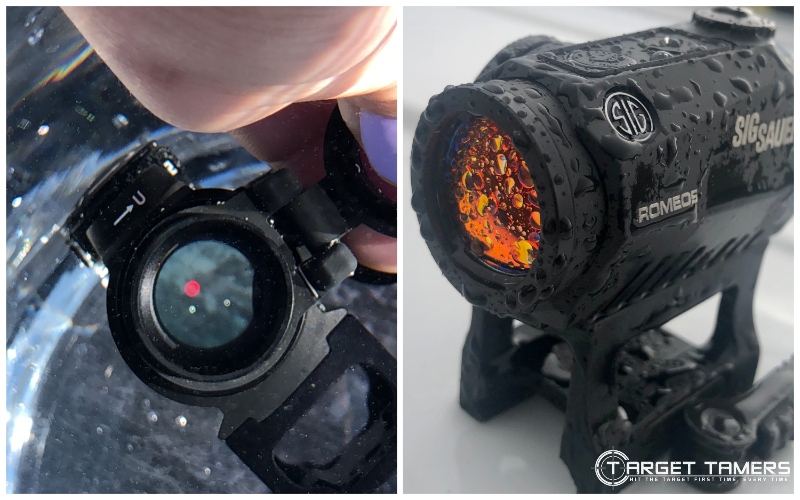
On average, Sig Sauer Romeo red dot sights are well-built and rugged. Seeing as both the MSR and the Romeo 5 are what I consider affordable red dots, I’m pleased to see that there’s little to no difference in build quality.
They’re made with an aluminum housing, come with metal mounts, and they’re IPX7 rated meaning that they’re at least good enough to be considered waterproof. I’ve had both out in extreme weather conditions and have submerged the MSR in water, and in my opinion, they’ll last through any realistic situation I’ll find myself in.
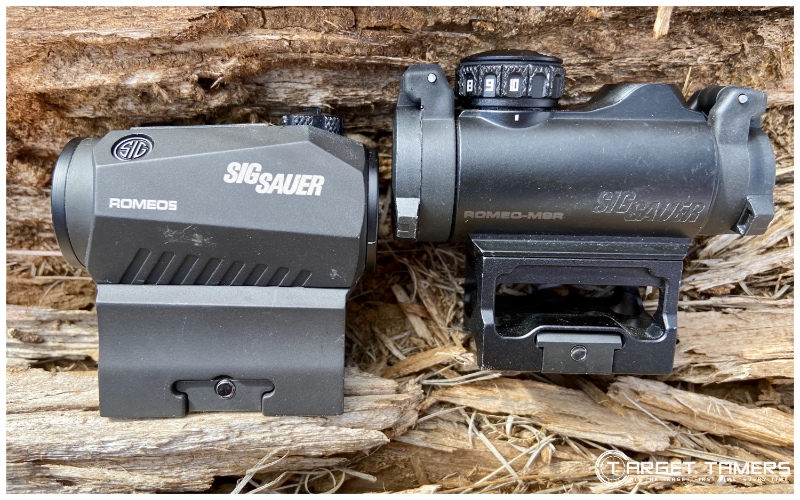
But to further slim the margins, the finish is slightly different between the two. The Romeo 5 seems to have that standard black anodized finish, but it’s taken far more superficial damage (scratches and marring) than the MSR. The finish on the MSR has a very light gloss/silky coating to it that has handled superficial abuse far better than the Romeo 5.
Winner: Romeo MSR
Turrets
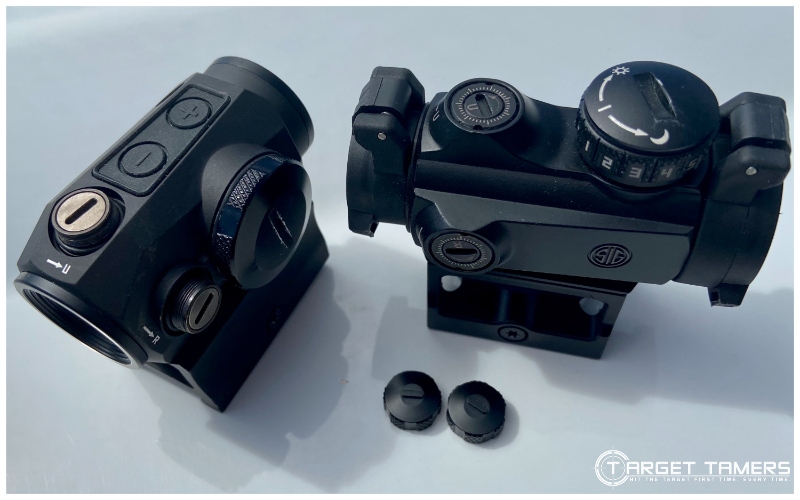
The turrets on the Romeo MSR and the Romeo 5 are different. The MSR has exposed turrets that are recessed into the body. I don’t mind this, but it does mean I need to keep a tool nearby or use a brass casing to make adjustments.
Even though they’re exposed, they don’t prove a threat to build quality, because I’ve submerged them in water as-is without consequence.
The Romeo 5 has capped turrets, and when the caps are removed, you can see that they’re elevated. I’ve never had the turrets pull or snag or anything so that’s not a big deal here. I actually really like the caps because they keep the turrets protected in inclement weather and they double as the tool to fit the slots to make adjustments. Just don’t lose the caps on windy days at the range!
Winner: Romeo 5
Adjustment Values
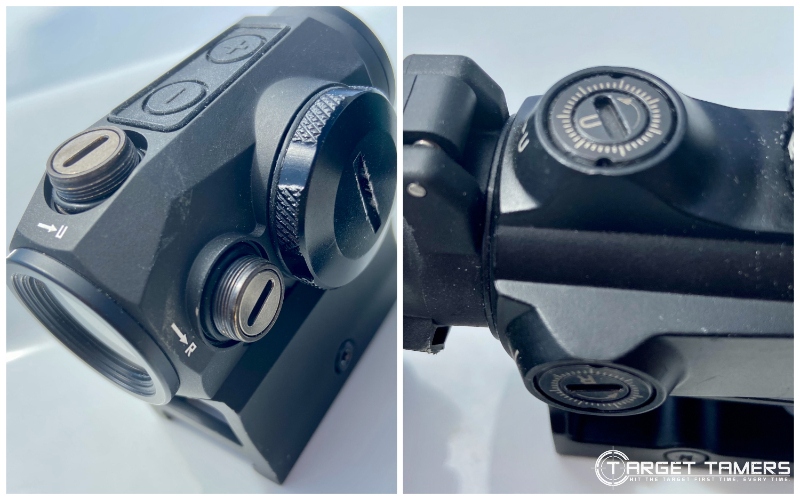
The Sig Sauer Romeo 5 has ½ MOA (0.5 MOA) adjustment values. So, each click moves the POI 0.5” at 100 yards. This allows for a little bit more precision if that’s what you’re after. It can mean a lot of clicks at 25 yards when you’re sighting-in.
The Romeo MSR has 1 MOA adjustment values. Each click moves the POI 1” at 100 yards. This is easy, simple, and a great red dot for beginners to start out with.
Most red dots are going to offer 1 MOA adjustments, but you’ll see 0.5 MOA adjustments on red dots that have a little more quality or special features, i.e., those that cost more.
In all, it will really depend on the application if 1 MOA or 0.5 MOA adjustments matter that much in the end. But because 1 MOA is common at this price point, easy to use, and it’s certainly the accepted norm for red dot accuracy, the MSR gets it.
For more on how to zero a red dot sight, check out my step-by-step instructions here.
Winner: Romeo MSR
Illumination Control Type
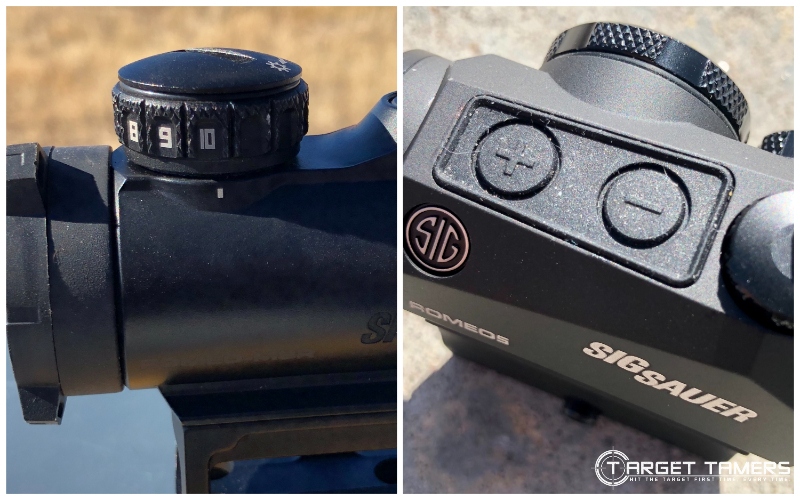
I’m personally a fan of illumination dials. I find them easy to use, and those that lack intermittent ‘off’ positions, you can rig it by moving the dial in between illumination settings. That usually ceases contact between the power source and the illumination system.
With that said, it would seem that I would prefer the MSR illumination dial, but I actually don’t in this case. It’s tough to turn and has not loosened up since day 1. I don’t mind it so much when I’m wearing gloves, but it’s tough on my baby hands otherwise.
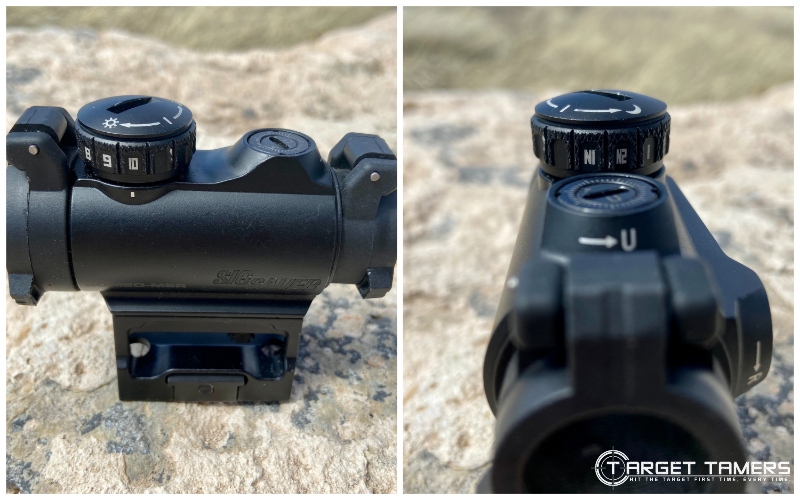
Another thing to point out is that it’s on top which isn’t my problem, but the fact that the indicator mark to let you know what setting you’re on is on the left side of the red dot. To note the setting, I am forced to leave my sight picture. However, you’re setting illumination for the appropriate conditions, so it’s about what your eyes see anyway, but it’s something worth noting.
The Romeo 5 has push button control. It’s ridiculously easy to use. There is no way to ‘rig’ turning it ‘off’ in between settings but that issue is nullified by the motion sensor – MOTAC. I think the only issue was upon box opening. When I put the battery in, the default brightness was on dim, so I thought it was broken, and I’ve heard that this was the same experience for many new Romeo 5 owners.
Just crank up the brightness until you see it – it’s not broken.
Winner: Romeo 5
Illumination Settings
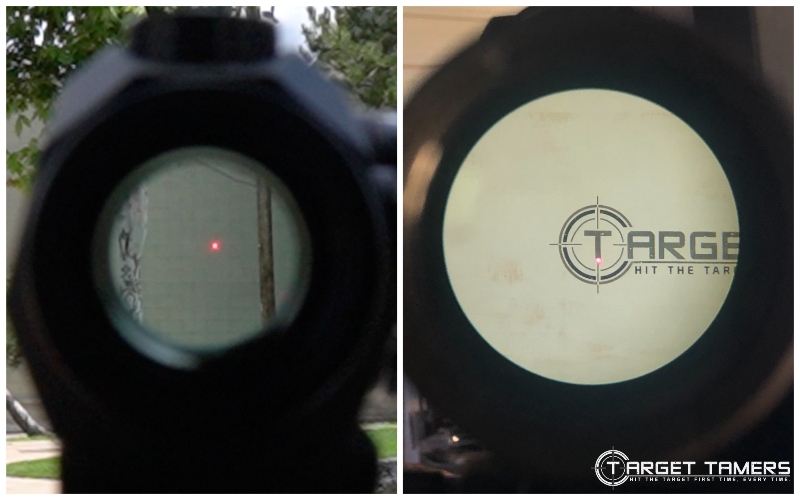
Right off the bat, the Romeo MSR has 10 daylight settings and 2 night vision compatible settings – yes, the Romeo MSR is night vision compatible! The Romeo 5 has 8 daylight settings and 2 night vision settings.
I’m very happy with the illumination quality on the MSR, and I declare it daylight bright. Because it has two extra settings than the Romeo 5, I declare it the winner.
Both of the Romeos are similar in the fact that illumination becomes very difficult to see in daylight conditions from level 5 and below. These lower settings are intended for low light conditions and night vision use, and both are exceptional for these applications.
Winner: Romeo MSR
Battery Life
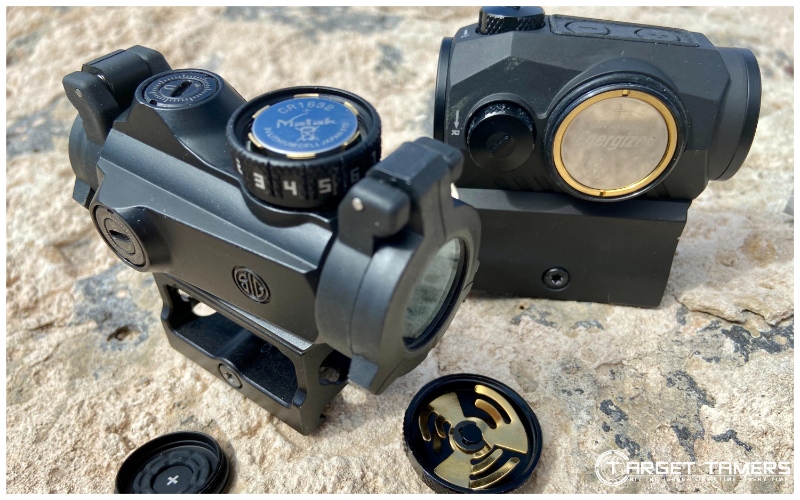
It’s an obvious winner which Romeo sight earns the right to hold the battery life trophy - the Romeo 5. It delivers about 40,000 hours which is around 4.5 years. Much of that battery life is owed to the battery conservation feature, MOTAC, and the battery type.
The Romeo MSR has 20,000 hours which is almost 2.5 years, but I would say that it doesn't hold up. I’d say more like 1-1.5 years is a better count. Even if the Romeo 5 follows this trend, it should still last longer than the MSR.
Changing out the battery every year is not an issue for most people, but since I’m slimming the margins, the Romeo 5 gets battery life.
Winner: Romeo 5
Battery Type
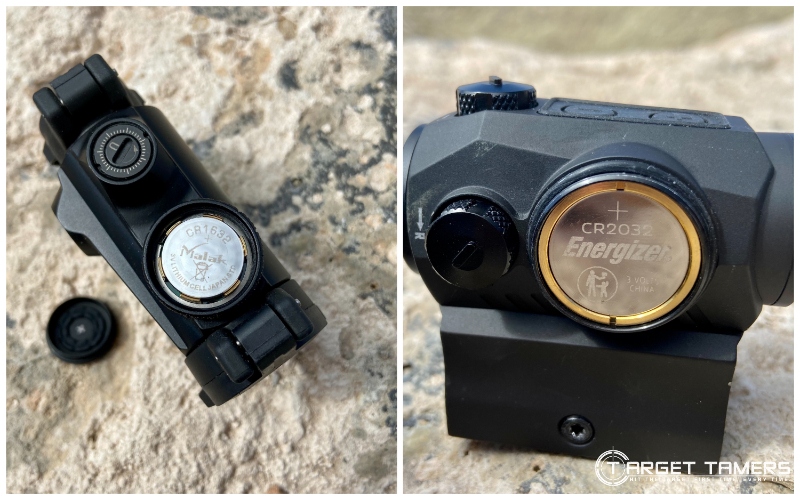
This is the downside about red dots in general: they’re useless without power. Hopefully if you have spares, you won’t be left hanging while in the field or at the range.
The Romeo 5 takes a CR2032 battery which is a common battery type for red dots and illuminated riflescopes like an LPVO (Low Power Variable Optic). If you have other battery-powered optics, it likely takes a CR2032. So, the convenience of the Romeo 5 taking a CR2032 battery is obvious – grab one from the bulk pack and you’re good to go plus some.
The MSR takes a slightly smaller CR1632 battery with a lower nominal capacity. Out of all my red dots, the MSR is the only one to take that type. This makes it a little more difficult to me to be motivated in buying extras in bulk, but that’s a personal problem.
I’d say just because of the convenience and commonness of illuminated optics taking CR2032 batteries, the Romeo 5 has an advantage.
Winner: Romeo 5
Mounts
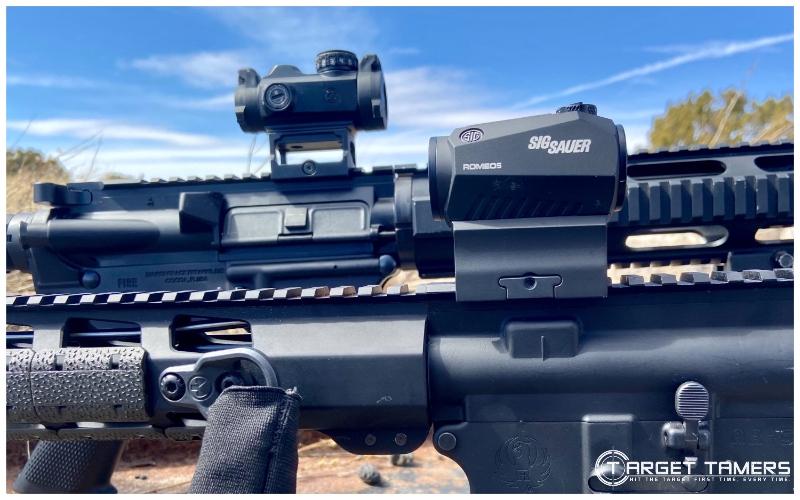
Mounts are typically included with the purchase of a red dot sight. The Sig Romeo MSR comes with a 1.41” riser mount that is set for an absolute co-witness with irons. I really like that it’s skeletonized and suspect it’s the reason why I like the way it looks over the Romeo 5.
The Sig Romeo 5 comes with a 1.41” riser mount that is obviously set for an absolute co-witness with iron sights. But the bonus with the R5 is that it also comes with a low-profile mount. You might never use it, but it’s another mount that allows for versatility especially if you’re putting the Romeo on another rifle.
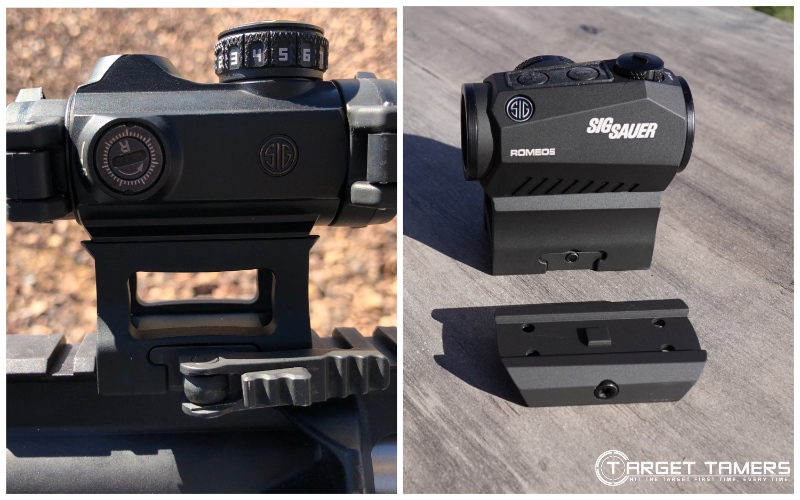
I think at this point, it’s a matter of personal preference since both primary mounts have the same optical height. Do you prioritize the looks of the MSR over the fact that you get an extra mount in the box with the Romeo 5? You could find need for it one day.
But since this is my review, while I really want to give it to the MSR because it looks better, the Romeo 5 gets it. There are always drawbacks to buying a separate mount that includes cost and finding the right footprint, appropriate screws, small flat screwdriver etc. To have a low-profile mount included in the box that’s designed for the Romeos is an immediate benefit that shouldn’t go ignored.
Winner: Romeo 5
Size & Weight
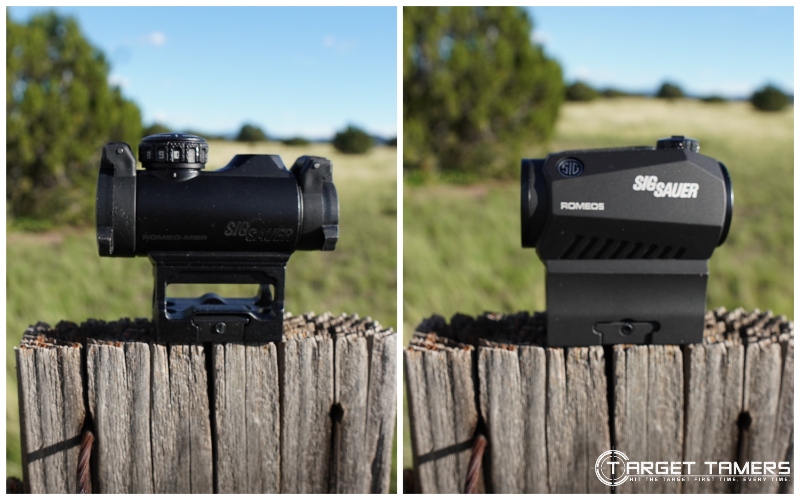
The Romeo 5 may look taller I think in part to the fully-body mount, but it’s actually about the same height as the MSR at just over 2.5”. The MSR looks more ‘compact’ to me, not counting length, simply because of the skeletonized mount. But the Romeo 5 does indeed come with smaller specs.
The Romeo 5 has a 2.4 x 1.5 x 1.5” size with a 5.1 oz weight. The Romeo MSR has a 3.1 x 1.5 x 2.6” size and 4.9 oz weight. It’s not really fair because Sig provided the height specs for the R5 based off the tube body while the gave the height spec for the MSR based off total height with the mount. They’re about the same in tube height at 1.5”.
The MSR comes in lighter – barely and that .2 ounce difference doesn’t make a major difference.
Winner: Romeo 5
Appearance (Aesthetics)
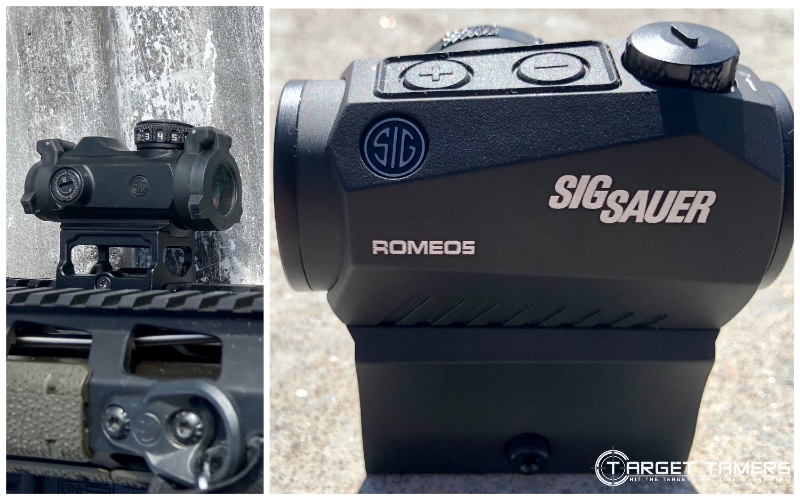
I’ve made it obvious by now that I prefer the look of the MSR versus the Romeo 5. The skeletonized mount and the flip-up caps provide a tacticool attitude that I think looks awesome on the rail.
The other thing I like about it is the ghosted-out logos and that they’re etched into the housing. I really like ‘less is more’ when it comes to logos and markings on optics. The only white markings that stand out is the UP and R arrows for adjustment directions and the illumination settings.
Sig burdens one side of the Romeo 5 body with all the branding. There’s a lot going on from the Sig Sauer brand name to the SIG logo to the model name being printed on the one side. Two out of the three brandings are stark white. This isn’t an appealing look to me.
Winner: Romeo MSR
Lens Caps
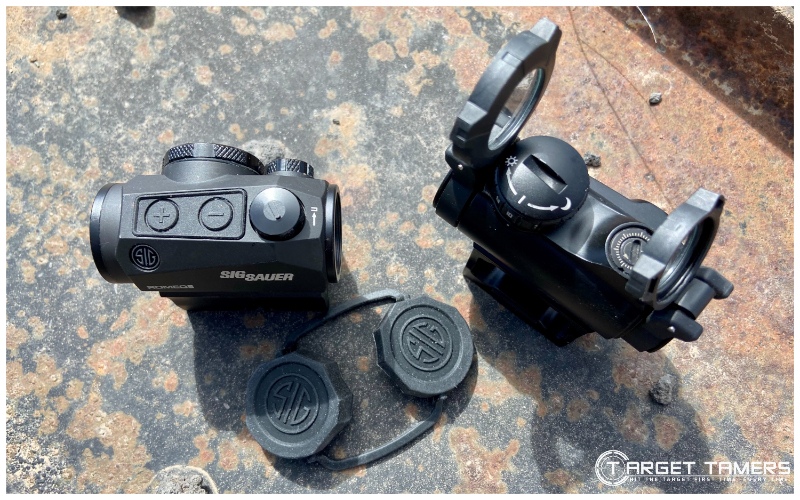
I have a very bad habit of getting my grubby fingers on the lenses. I see caps as serving two purposes at best: lens protection during storage and use! The default caps that you’ll usually see with red dots are rubber bikini lens caps, and this is what’s included with the Romeo 5.
They come off when it’s time to shoot, and they go back on during non-use/storage. They’re rubber, so over time they can dry out, lose shape, break, and you can lose them in the field. They’re good for keeping the lens free of dust during storage or while on the rack or wall hanger. I will say that I like the way the caps are shaped for a custom-fit to the cut of the objective and ocular bells.
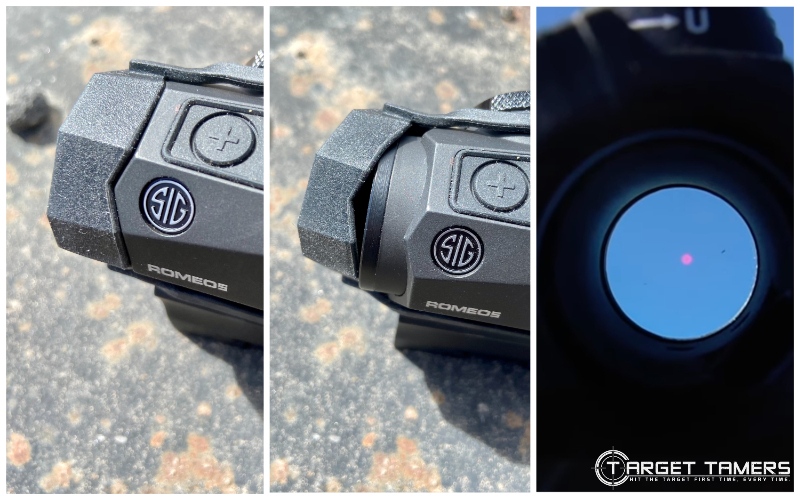
The Sig MSR comes with see-thru flip-up caps. I love them. Given that they can be used while actively shooting, I see no need to remove the caps. These definitely keep my sticky fingers off the glass, but more so, water, dust, mud, debris – you get the point. The eyepiece cap is a little snug to snap back on, but I’m being petty now.
Winner: Romeo MSR
Special Features
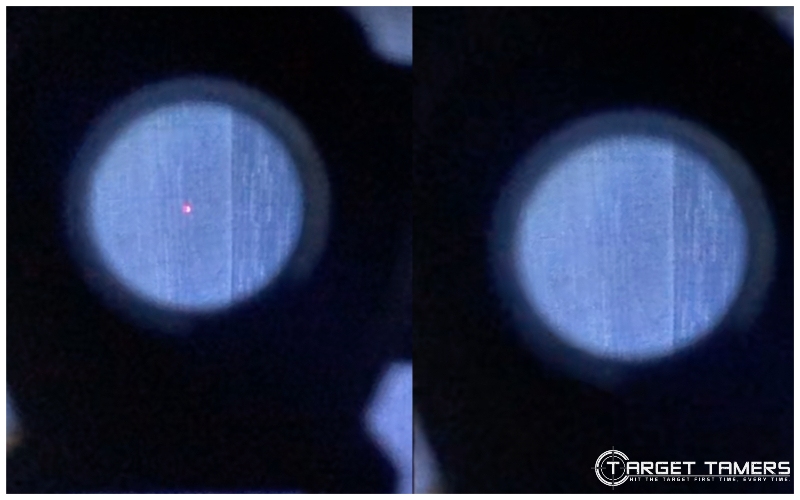
Now, we’ve finally come to the primary difference between the Romeo MSR VS the Romeo 5: MOTAC. It stands for Motion Activated Illumination. It has a sensor that powers down the dot when there is no motion and then reactivates the dot when it does sense motion.
This is a big advantage to those looking for battery conservation features in applications like law enforcement and home defense.
To be as pragmatic as possible, the real advantage is that you’re eliminating the step of needing to either manually turn on a red dot sight or confirming that you have a dot when needing to engage a threat. But some have made a habit of performing these steps before engaging a threat anyways - with or without MOTAC.
The risks would be red dot sight failure stemming from sensor failure (the dot not reactivating), a low or dead battery, or battery consumption when you don’t expect it, i.e., bumps and movement while sitting in a patrol car or truck cab. Sensors can be that sensitive as it’s not designed to determine when you’re actively using it or if it’s unintentional movement.
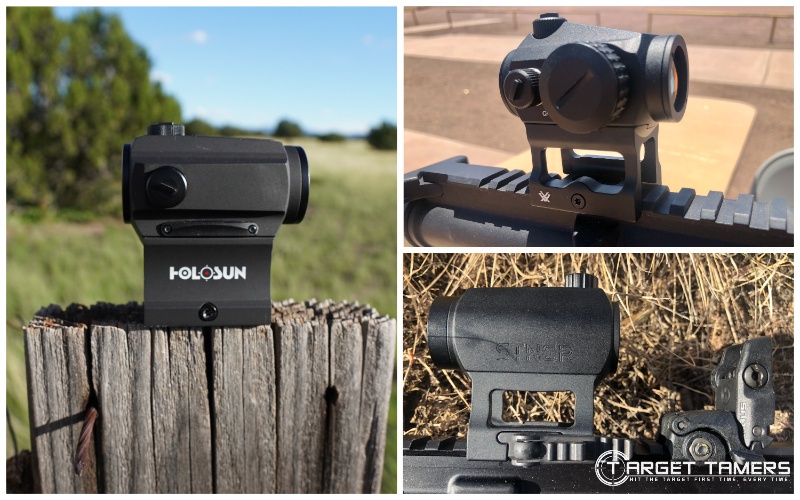
There’s also red dot sights with motion sensor tech and without with longer lasting battery life. The Holosun HS403B has Shake Awake with a 50,000-hour battery runtime and the Vortex Crossfire II or the STNGR Axiom II have a 50,000-hour battery life as a continuous-on red dot.
The Romeo MSR does not have MOTAC, so it is a continuous-on red dot sight. This is appealing in its own way because you don’t have to worry about sensors or failure related to that technology.
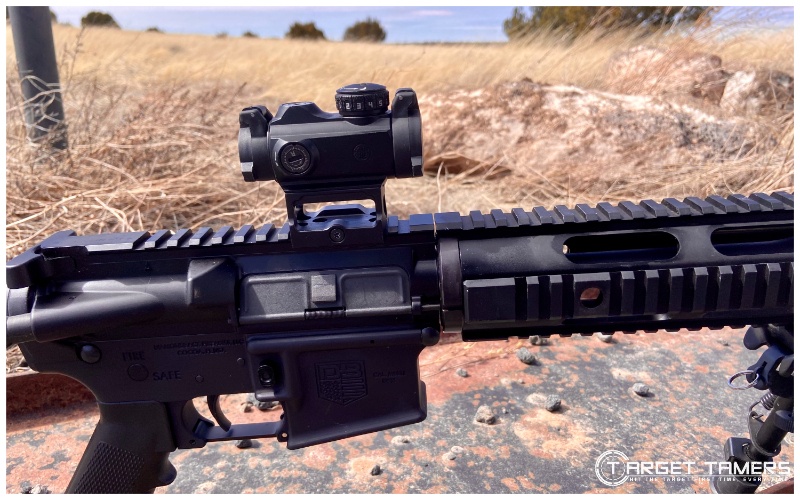
However, this is where I draw the line. The MSR doesn’t have as impressive battery runtime, regardless of the MOTAC, compared to the Romeo 5, let alone alternative continuous-on red dot sights.
Overall, you either want the MOTAC and the extra cost is worth paying more for, or you don’t care for it, don’t mind changing out the battery every year, and can save some cash by opting for the MSR.
Winner: Romeo 5
Who is Sig Sauer Romeo MSR Best Suited To?
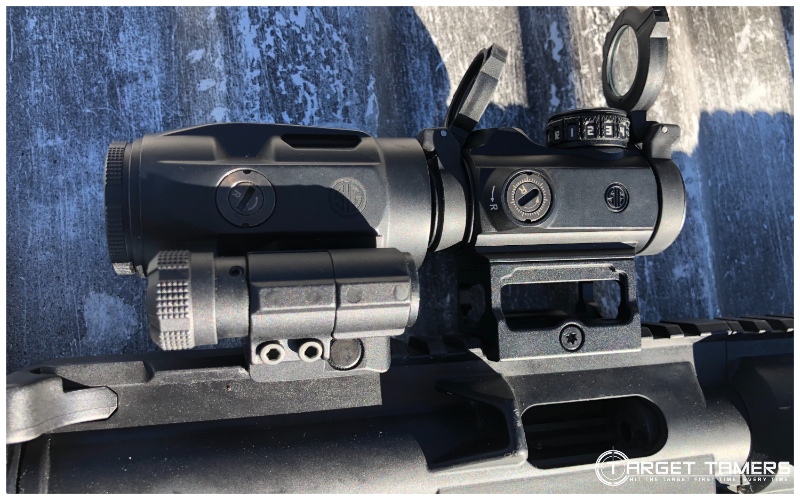
The Romeo MSR red dot sight is excellent for continuous-on benefits. Not everyone finds value in a motion-sensor optic, but it does come at the cost of battery life. I have had to change the battery after one year of use despite the 2-year runtime listed in the specs.
The MSR is affordable, so it best fits budgets under $100 and is one of my most highly recommended budget red dot sights to date. I really like the see-thru flip-up caps that I keep on 24/7, and I personally find it aesthetically pleasing versus the Romeo 5. With 1 MOA adjustments, it’s easy to zero.
Overall, the continuous-on advantage, low price, 1 MOA adjustments, caps, and the ‘looks’ makes it a worthwhile red dot sight for the money. It’s simple and easy to use but is rugged to last a long time for multiple applications from hunting to night vision equipment compatibility, and more.
Who is Sig Sauer Romeo 5 Best Suited To?
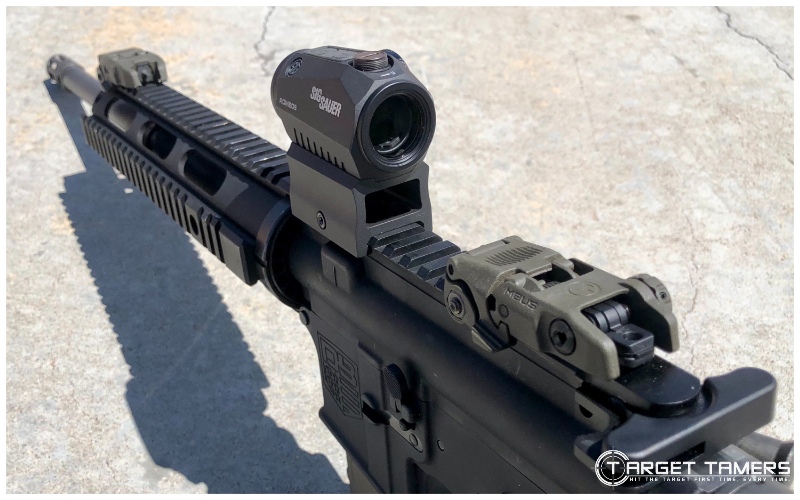
The Romeo 5 is a fantastic budget red dot sight with a motion sensor – Sig Sauer’s MOTAC technology. It works and is why the Romeo 5 has the longer-lasting battery runtime of about 4.5 years. Even though the timer can’t be adjusted, it’s extremely sensitive and activates with barely any movement.
I know I’m not the only one that finds the illumination dial on the Romeo MSR to be stiff, so the button operation on the Romeo 5 is a welcome difference. The caps for the turrets are a great addition as they provide both protection and adjustment benefits as they serve as the tool.
The mount is kind of an eye sore since I personally like skeletonized mounts, but the Romeo 5 comes with a low-profile mount in the box which the Romeo MSR lacks. All in all, the Romeo 5 has battery runtime and MOTAC as a huge advantage over the MSR which could be suitable for some defense applications.
FAQ's
The Romeo MSR would be a better red dot sight for hunting as it’s a continuous-on optic. The dot will not ‘disappear’, so to speak, when you may need it most, eliminating the movement required to activate it when trying to stay covert. Additionally, it’s IPX7 rated and fogproof.
Overall, both the Romeo MSR and the Romeo 5 have the T1 Aimpoint Micro footprint. It’s a common footprint and allows for swapping out for a new mount such as a quick release mount or a skeletonized mount for the Romeo 5.
Riser mount detached from Sig Sauer Romeo MSR to expose mounting footprint - Image by Tina Fa'apoi (Own Work) for Target Tamers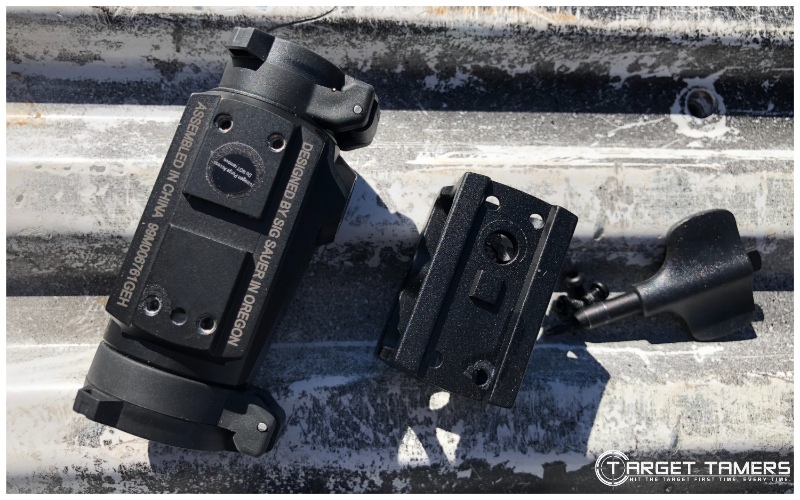
The Romeo 5 and Romeo MSR are intended for use on an AR-style carbine or rifle. They are preinstalled with rail mounts. They can also be mounted to air rifle, hunting, rimfire, shotgun, or muzzleloader rifles with a rail. Various mounts can be purchased to find the appropriate height for the setup.
Sig Sauer Romeo MSR and Juliet3-Micro mounted to M&P 15/22 - Image by Tina Fa'apoi (Own Work) for Target Tamers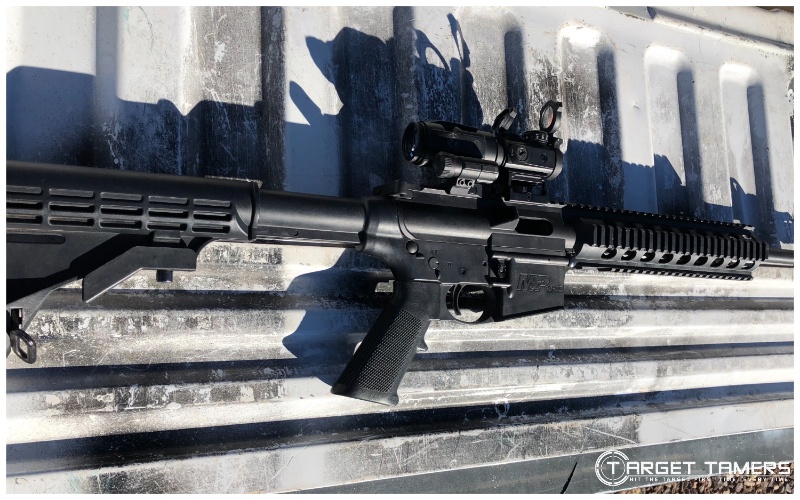
On average, Sig Sauer Romeo red dots are intended for close-quarter engagements inside 100 yards. This is due to the 1x power, dot subtension, and unlimited FOV. However, red dots are commonly sighted-in for a 50/200-yard or a 36/300-yard zero allowing a second effective range without holding over.
Though target visibility with 1x at extended ranges is another thing altogether.
Red dot at 1x (no magnifier) on 100-yard target - Image by Tina Fa'apoi (Own Work) for Target Tamers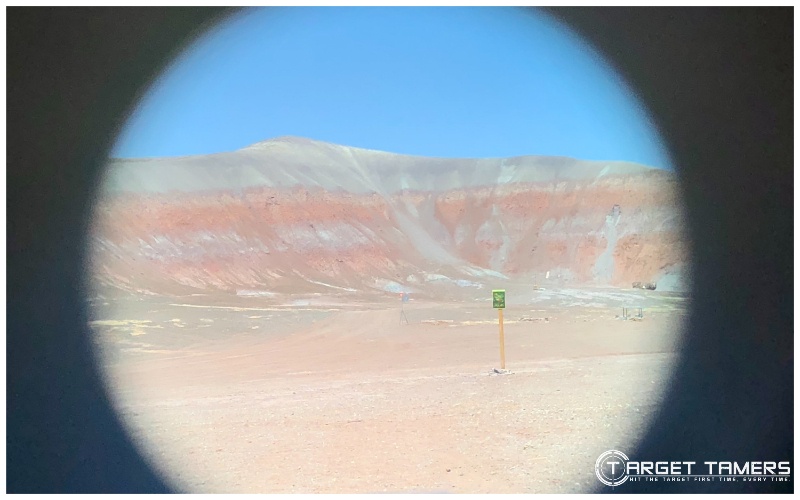
Deciding whether the MSR or the Romeo 5 is better for astigmatism is a subjective determination. From personal experience with a refractive error condition, I had the best results with the Romeo MSR; slight comma and starbursting with the Romeo 5. Levels of dot distortion will vary for everyone.
Sig Sauer Romeo 5 VS Romeo MSR: Which is Right for You?
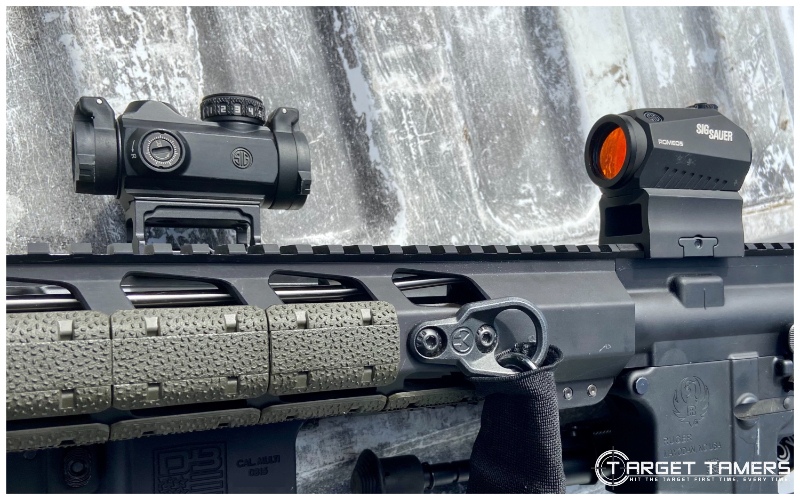
Overall, the Romeo 5 is the top Sig Sauer red dot sight for motion sensor technology and a longer battery life. The Romeo MSR is the most affordable of the two but with flip-up caps, more brightness settings, and a better scratch-resistant finish.
When it comes to the Romeo MSR VS Romeo 5 comparison, only you can determine what’s important to you based on your preferences and application.
Both are reasonably close in cost, but there are significant enough physical and operating differences between them that by now you should be able to pick out which is right for you.
Further Reading





This in-depth comparison of the Romeo MSR and Romeo 5 is a real eye-opener for a dedicated Sig fan like myself. Both offer incredible value and cater to different preferences. The Romeo 5's MOTAC and extended battery life are hard to ignore, especially for dynamic scenarios. On the other hand, the MSR's manual adjustments and potentially crisper dot could be ideal for more deliberate, long-range engagements. Ultimately, the "best" choice depends on individual needs and shooting style.